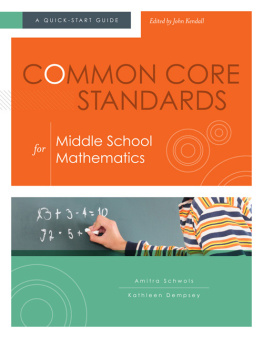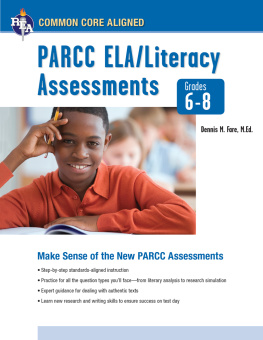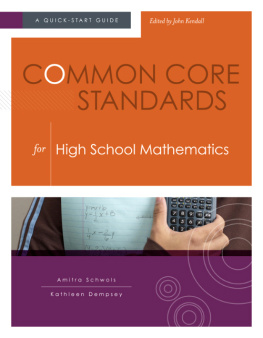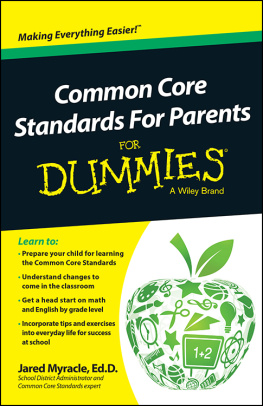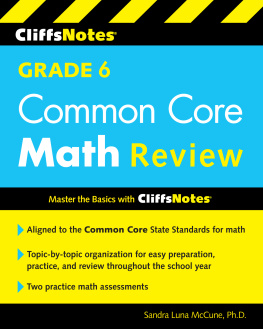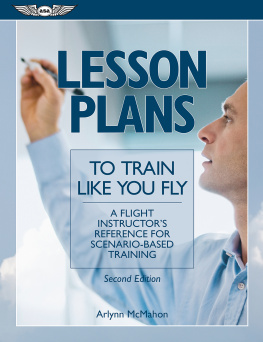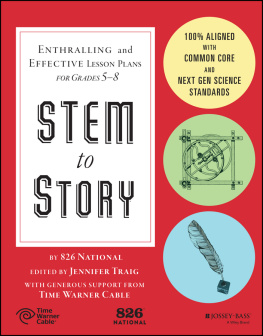
Copyright 2017 by Joyce Keeling
All rights reserved. No part of this publication may be reproduced, stored in a retrieval system, or transmitted, in any form or by any means, electronic, mechanical, photocopying, recording, or otherwise, except for the inclusion of brief quotations in a review, without prior permission in writing from the publisher.
Library of Congress Cataloging-in-Publication Data
Names: Keeling, Joyce, author.
Title: Standards-based lesson plans for the busy elementary school librarian / Joyce Keeling.
Description: Santa Barbara, California : Libraries Unlimited, an imprint of ABC-CLIO, LLC, [2017] | Includes bibliographical references and index.
Identifiers: LCCN 2016053488 (print) | LCCN 2017010208 (ebook) | ISBN 9781440851322 (paperback : acid-free paper) | ISBN 9781440851339 (ebook)
Subjects: LCSH: Elementary school librariesActivity programsUnited States. | Information literacyStudy and teaching (Elementary)United States. | Information literacyStandardsUnited States. | Language arts (Elementary)United States. | Language arts (Elementary)StandardsUnited States. | School librarian participation in curriculum planningUnited States. | Education, ElementaryCurriculaUnited States.
Classification: LCC Z675.S3 K43 2017 (print) | LCC Z675.S3 (ebook) | DDC 025.5/6782220973dc23
LC record available at https://lccn.loc.gov/2016053488
ISBN: 9781440851322
EISBN: 9781440851339
21 20 19 18 171 2 3 4 5
This book is also available as an eBook.
Libraries Unlimited
An Imprint of ABC-CLIO, LLC
ABC-CLIO, LLC
130 Cremona Drive, P.O. Box 1911
Santa Barbara, California 93116-1911
www.abc-clio.com
This book is printed on acid-free paper 
Manufactured in the United States of America
This is dedicated to my sons, Chad Keeling and Rob Keeling and their families (Jan, Carisa, Adam, Katie, Allie, Ava, and Blake). It is also dedicated to the Clarion-Goldfield-Dows School students and to all elementary students all over the world.
Standards in the School Library Curriculum and Other Information Related to This Book
School libraries like all school classrooms have a standards-based curriculum, as educational standards place a knowledge-expected framework for learning. Just as in the main classroom, the library classroom involves a teaching team, as a school librarian and all teachers work together for information literate students of today and for student future literary needs in an ever-changing world. Current standards are set to meet the needs for the twenty-first-century student. For clarification in this book, the term school librarian refers to a teacher librarian, library media specialist, and elementary school librarian teacher. This book has connected some of the current major literacy and English language arts standards to active learning with easy to access and use lesson plans and resources for the busy elementary school librarian.
A school librarian may use all of the standards or select some of the standards given with each lesson in this book. A school librarys standards are usually based on American Association of School Librarians (AASL) standards and then are most likely set within school districts standards from state guidelines and suggested national standards as well. With every lesson in this book, the English language arts and literacy learning standards are set from AASL literacy standards, the McREL Compendium of Standards and Benchmarks, and the Common Core State Standards (CCSS). English language arts and literacy standards create an effective library learning curriculum program. Since this book is built on standards, it is noteworthy to know about standards, the AASL, McREL, and CCSS standard choices for this book, and how those standards are different but yet similar, and it is noteworthy to look at other crucial elements of this book, as all seen as essential for quality elementary school library programs.
California studies show that effective school library programs based on English language arts and as taught by certified school librarians provide a positive link to student achievement (Ong 2010). South Carolina studies prove that effective school library programs contribute to student success, especially when those programs that teach literary, informational text skills, and research are taught by certified school librarians (Gavigan and Curry 2016). When state standards and consequently school-wide standards are developed and instigated in school libraries and aligned with other classrooms by school librarian teachers, student achievement increased (New York Comprehensive Center 2011). Iowa school reading scores with well-developed library programs (Scholastic 2008). School library programs are more successfully taught with educational standards.
Educational standards are deemed important in education, as standards point out what students are expected to learn and what areas of learning should be tested (Great Schools 2014). Standards provide specific guidelines for commercial products so that one can purchase more reliable products (IEEE-SA 2011), and since standards are set in the commercial world, standards are set in education for reliability learning guidelines as well. Most importantly, educational standards form the learning basis, but teachers provide the learning (Kendall 2011).
Standards not only provide a learning purpose or goal but also provide ways to increase student achievement, which then clarifies and increases learning expectations, especially when standards are clearly stated (McREL 2015). Since educational school standards are regarded as essential (Great Schools 2014), school library teachers and all other teachers address those mandated or suggested standards in the school classroom. Educational standards are given or suggested in U.S. laws, including the previous No Child Left Behind Act as first set in 2002 and through other such laws (Great Schools 2014). The No Child Left Behind Act set out to establish learning standards for all children, with states setting their own learning standards in reading, math, and science (Great Schools 2014). The No Child Left Behind Act also mandated testing and worked at accountability (Korte 2015).
The No Child Left Behind Act was set under the 1965 Elementary and Secondary Act, thus showing many years of standards-based approach to learning in the United States (Shepard, Hannaway, and Baker 2009). The No Child Left Behind Act was replaced by the Every Student Succeeds Act in 2015 (Garland 2016). The Every Student Succeeds Act was set so that there could be higher academic standards for each states educational programs, so helping all students to achieve, while giving more student accountability, and allowing fewer but better assessments according to the White House (Earnest, White House Office of the Press 2015). The Every Student Succeeds Act encouraged states to adopt the Common Core Standards, but did not require that adoption of the standards (Korte, 2015). With the Every Student Succeeds Act, there was a goal for clearer and more stringent educational standards so that students could better excel (Shepard, Hannaway, and Baker 2009).
Along with the United States and other countries examining educational national standards, associations and other entities also look at both national and international educational standards. For example, both the National Council of Teachers of English and the International Reading Association joined to form language arts standards (National Council of Teachers of English 2012). Those national and international English and reading standards and others are seen in still other educational standards like in the McREL Compendium Standards and Benchmarks (McREL 2015). The CCSS are linked with international standards too (Garland 2016). National and international association education standards create connected learning across the globe.



